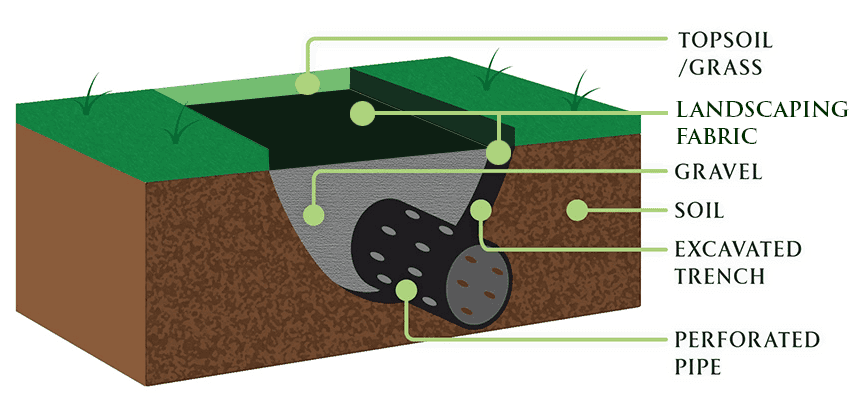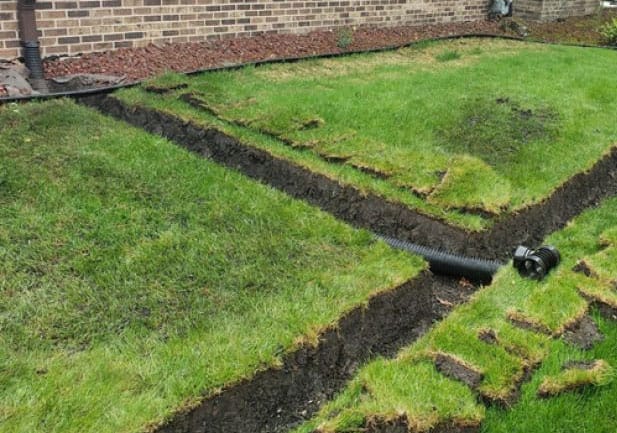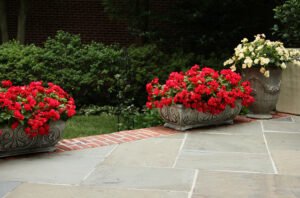A Homeowner’s Guide to Smart Drainage
When water starts pooling around your home’s foundation or turning your yard into a soggy mess, it’s time to take action. One of the most effective and time-tested solutions for diverting excess water away from your home is a French drain. Despite its name, this drainage technique has nothing to do with France and everything to do with smart landscaping.
What Is a French Drain?
A French drain is a slightly sloped trench filled with gravel and a perforated pipe that redirects surface water or groundwater away from a specific area, typically a home’s foundation, basement, or low-lying parts of a yard. It was named after Henry Flagg French, an American lawyer and agriculture expert who popularized the system in the 19th century.

How It Works
The concept is simple yet highly effective. Water naturally flows downhill and will follow the path of least resistance. By installing a perforated pipe inside a gravel-filled trench, water is given an easy route to travel—away from your home and toward a safer drainage area, such as a storm drain, dry well, or a lower section of your yard.
Where Homeowners Can Use a French Drain
Shorb will evaluate your property and identify problem areas. Typical areas where French drains can help:
- Around the foundation: Helps prevent basement flooding and foundation damage.
- In the yard: Eliminates standing water and soggy patches.
- Behind retaining walls: Reduces hydrostatic pressure and wall failure.
- Under downspouts: Redirects roof runoff before it accumulates near the foundation.
Benefits of Installing a French Drain
- Protects your foundation: Prevents costly structural damage caused by water infiltration.
- Improves yard usability: Keeps lawns, gardens, and patios dry and accessible.
- Prevents basement leaks: Reduces the risk of mold and mildew from a damp basement.
- Low maintenance: Once installed, it requires minimal upkeep.
DIY or Hire Shorb?
 Some handy homeowners may be able to tackle a basic French drain project on their own, but it can be a very time-consuming and labor-intensive project without the proper tools and experience. Properly diagnosing drainage issues and complex situations—such as drainage near a home’s foundation or sloped landscapes—require professional expertise and specialized equipment to address the job correctly. The experts at Shorb will create a plan that includes key steps, such as:
Some handy homeowners may be able to tackle a basic French drain project on their own, but it can be a very time-consuming and labor-intensive project without the proper tools and experience. Properly diagnosing drainage issues and complex situations—such as drainage near a home’s foundation or sloped landscapes—require professional expertise and specialized equipment to address the job correctly. The experts at Shorb will create a plan that includes key steps, such as:
- Planning the route: The drain must slope at least 1 inch for every 8 feet of length.
- Digging the trench: Typically 6 inches wide and 18-24 inches deep.
- Laying landscape fabric: Prevents soil from clogging the gravel.
- Adding gravel and pipe: Use a perforated, flexible drain pipe surrounded by clean gravel.
- Covering and finishing: Fold fabric over the gravel, add topsoil or sod as needed.
Considerations Before You Dig
- Check local codes: Some municipalities may require permits.
- Call before you dig: Contact utility companies to mark underground lines.
- Ensure proper outlet: Make sure water exits safely without causing issues downstream.
Recap
French drains are an excellent, efficient solution for homeowners dealing with drainage problems. Whether you’re preventing basement leaks or reclaiming a waterlogged lawn, this system offers long-term protection with minimal maintenance. With proper planning and installation, Shorb can help you protect your investment and enjoy a dry, healthy home for years to come.







